Peterman
Examples of the Safe-Blowers work
|
James McMenamin – Wholesale Jewellers – Glasgow – 5th June 1908 This is the only recorded safe-blowing where gunpowder was used. The safe is a Milner List 2 quality. Although only a fire-safe, the value of contents lost was £3,000. As Milner safes had been fitted with ‘powder-proof ‘locks since 1845, the only means of introducing gunpowder was by drilling a hole through the door plate and pouring it into the chamber. It appears that the safe had been dropped on its back when the charge was detonated and with the bulk of the powder in the top end of the chamber, the result was that the 16 or so screws fastening the chamber sheared off, leaving the distorted remains of the embedded in the frame. The most likely candidate for this would have been “Scotch Jimmy” who was particularly active around this time.
He
was known to carry an assortment of tools which would have allowed
him to prise the distorted chamber from the opening. The lock is
still intact in the middle of the back of the door. |
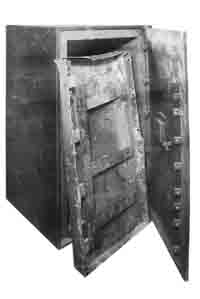 |
||
|
Greenock Cooperative Society Grocery - 1950’s Ratner Grade 3 This
was the typical crime scene after the fingerprint squad had finished
with their forensic examination. As happened in such locations,
the safe had been covered with material to hand in order to help
muffle the sound of the explosion – in this instance –
sacks of rice. |
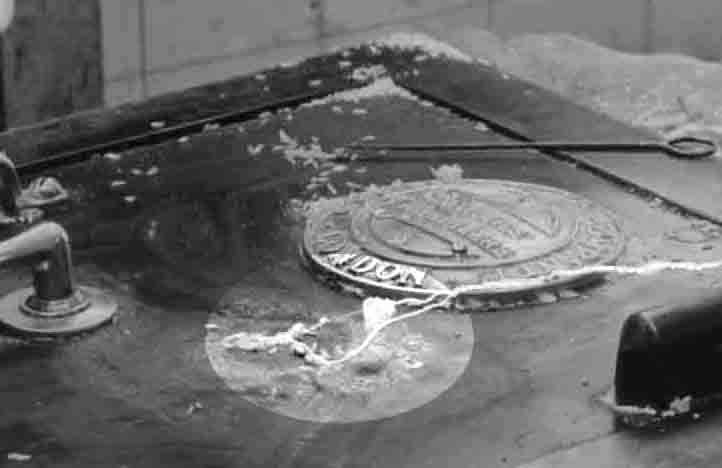 |
||
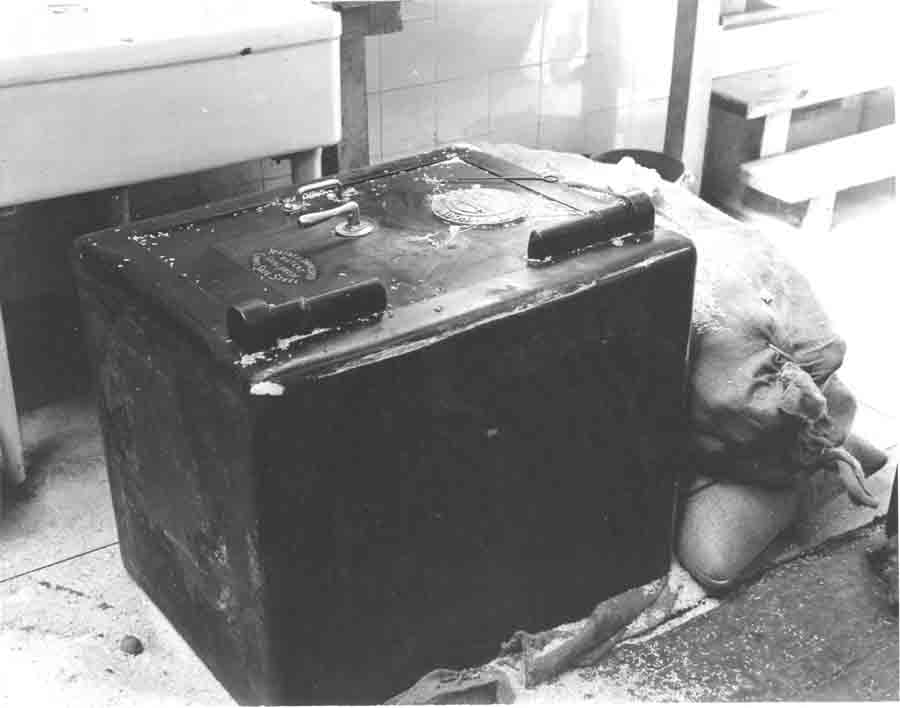 |
|
||
|
|
|||
|
Edwards Jewellers – St.Vincent Street, Glasgow. June 1964. Jewellery loss estimated £80,000 It
was therefore clearly visible at night situated as it was between
the two glass shop doors. The thieves however managed to lower the
safe into the basement where they could work undisturbed. They first
attempted to cut through the lower ¾ of the right hand door
with an oxy-acetylene torch. Due to lack of skill they did not penetrate
the full door thickness which comprised two ½” steel
plates riveted together. They then attempted to cut out the lower
of the two keylocks, but for the same reason as before they failed.
|
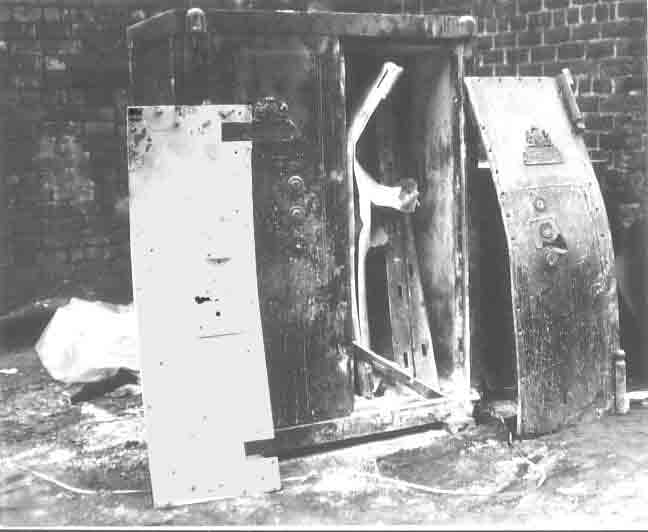 |
||
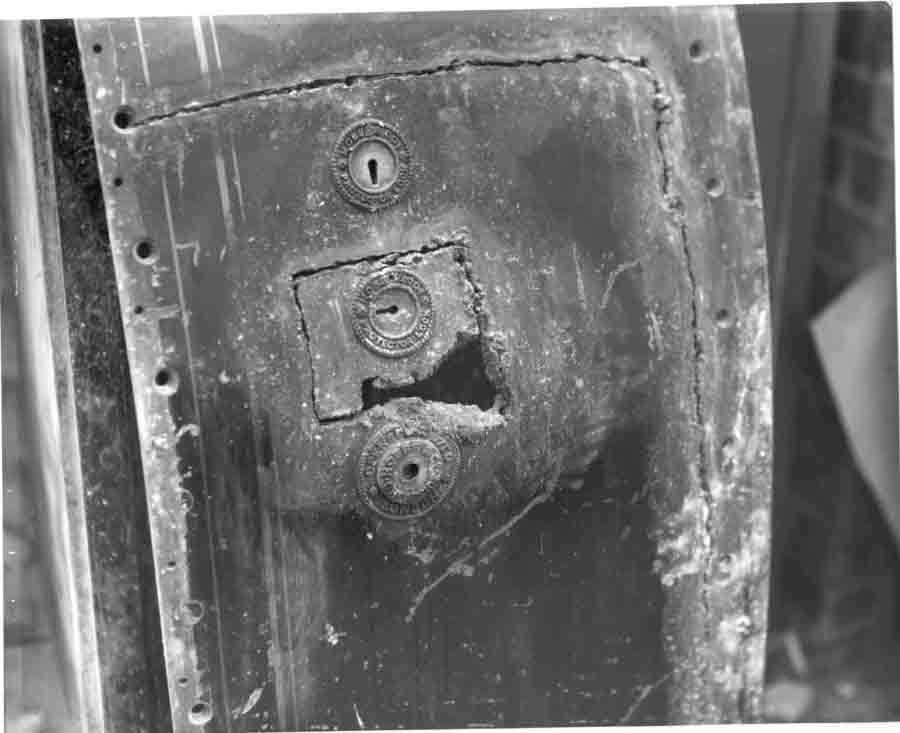 |
They
then applied a thermic lance which produced the enlarged hole
below the lock, and through this an extremely large charge of
explosives was detonated, the force of which separated the laminated
plates ofthe right hand door and all the angle bar frame which
had formed the lockcase. A very well planned and executed robbery
with little left to chance. As for the safes contents it is doubtful
if the Rolex watches survived intact. |
||
|
Ratner Grade 1 Fire Resisting Quality – Scene and Date unknown This is an example of a reasonably well executed but failed attempt to blow open a book safe. The charge has removed most of the keylock, the remains of which can be seen still attached to the back of the door plate.
With a slightly lesser charge the fire-resisting chamber housing the boltwork would have remained fixed to the door and the bolts withdrawn using the external handle.
However the force of the explosion has caused the four front edge retaining screws to shear with the result that the chamber became lodged within the door opening at its leading edge and any attempt to pull on the door would only cause it to jam more tightly.
This is a result of the door geometry, which being hinged on an external pivot, requires that internal components have to swing in a slight arc to the left before passing clear.
The
reddish powder is sawdust and alum packing from the ruptured fire-resisting
chamber. |
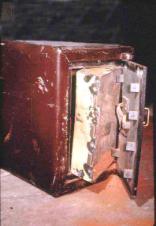 |
||